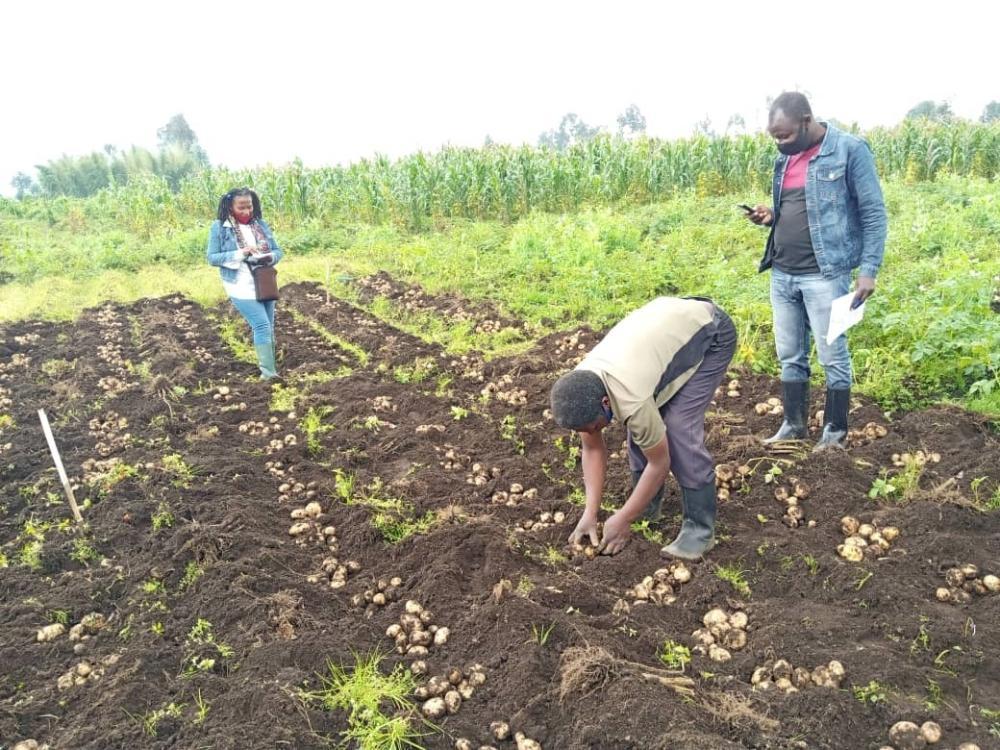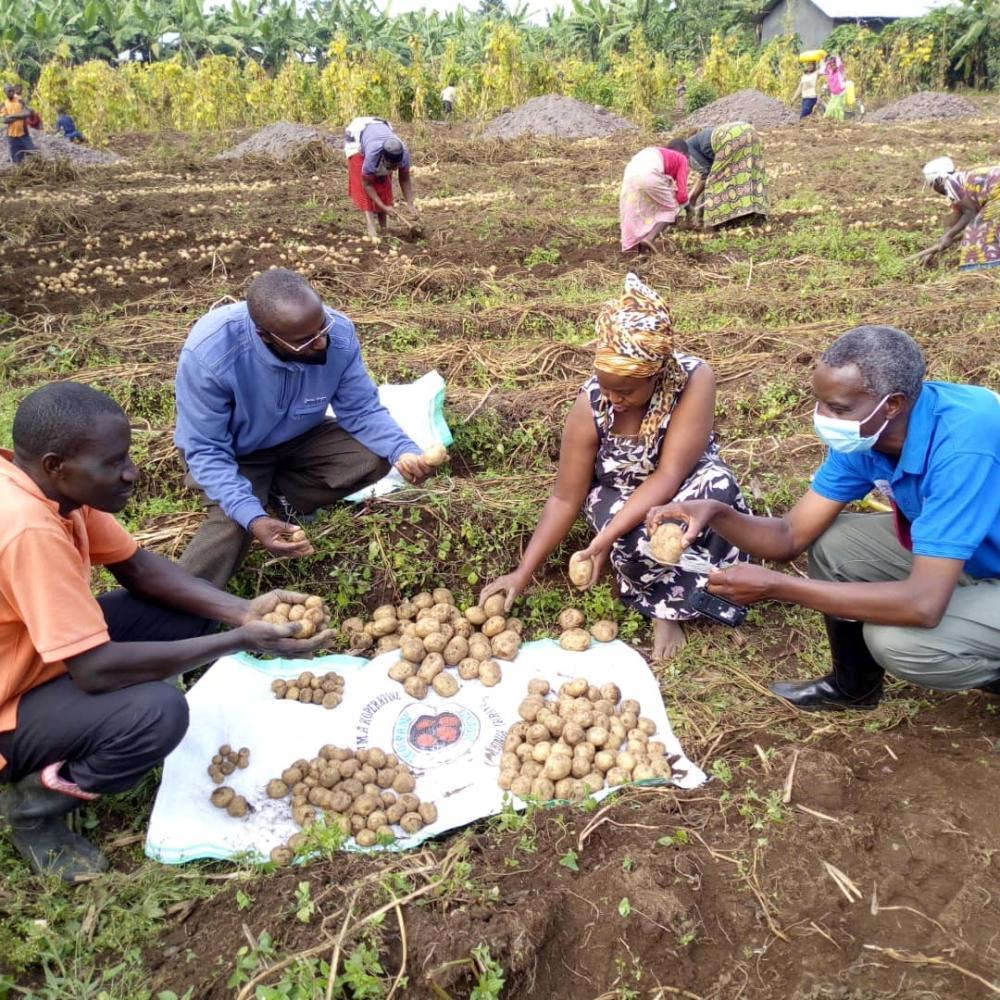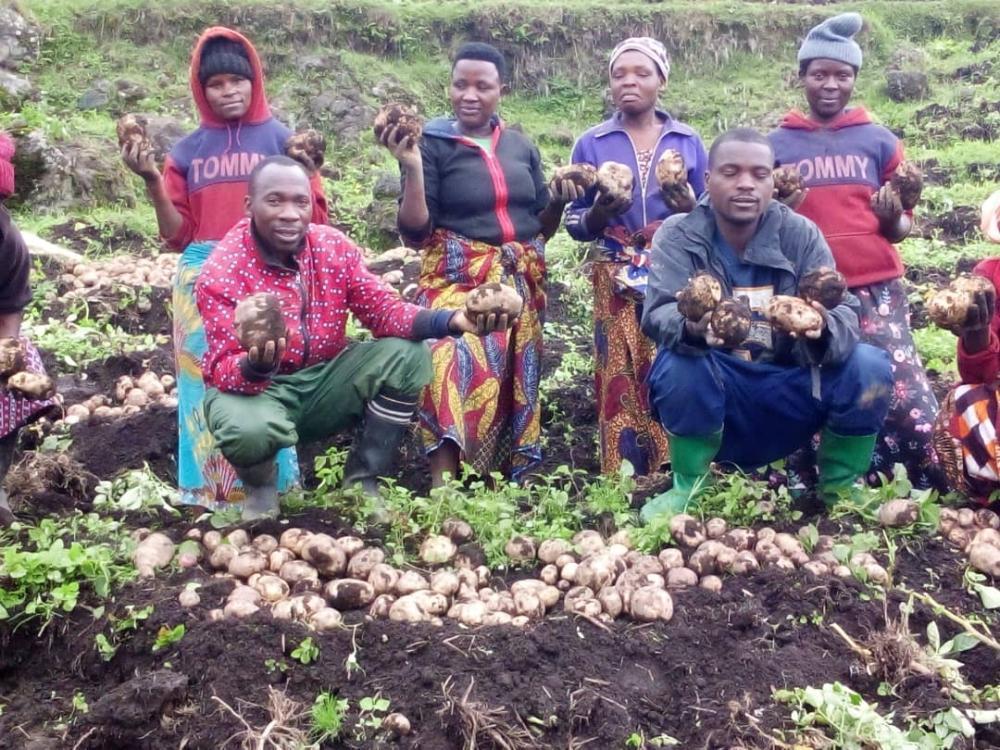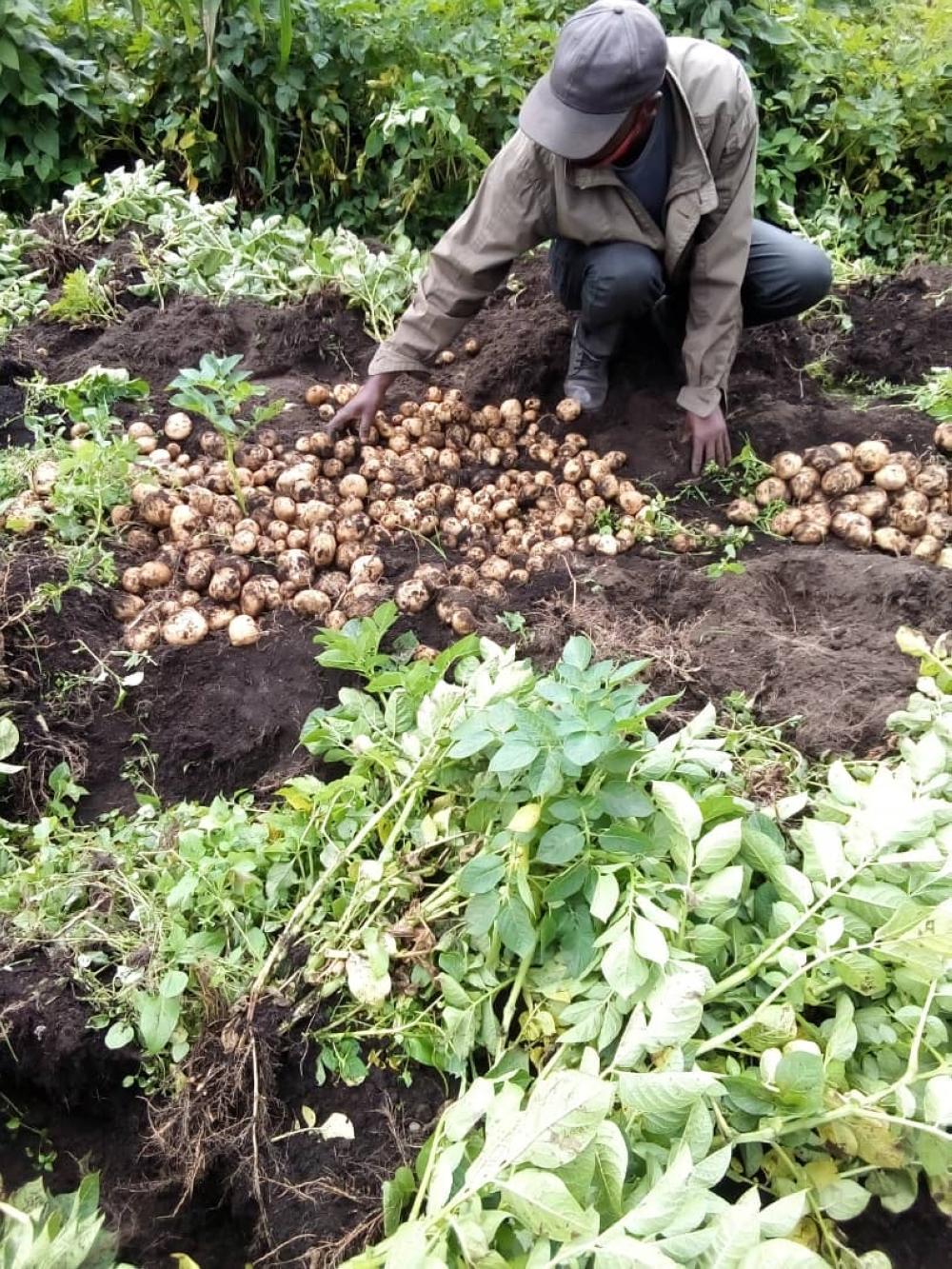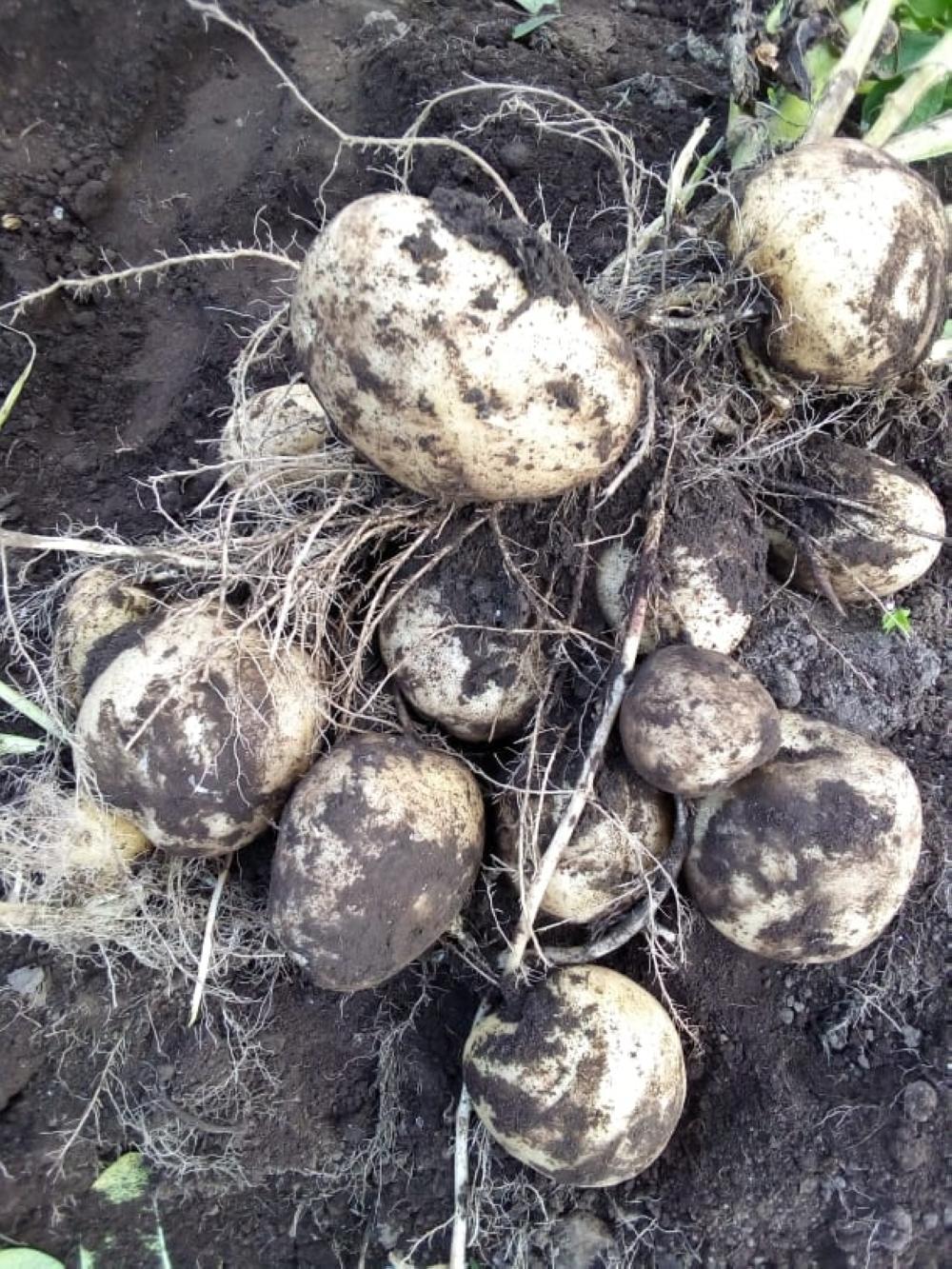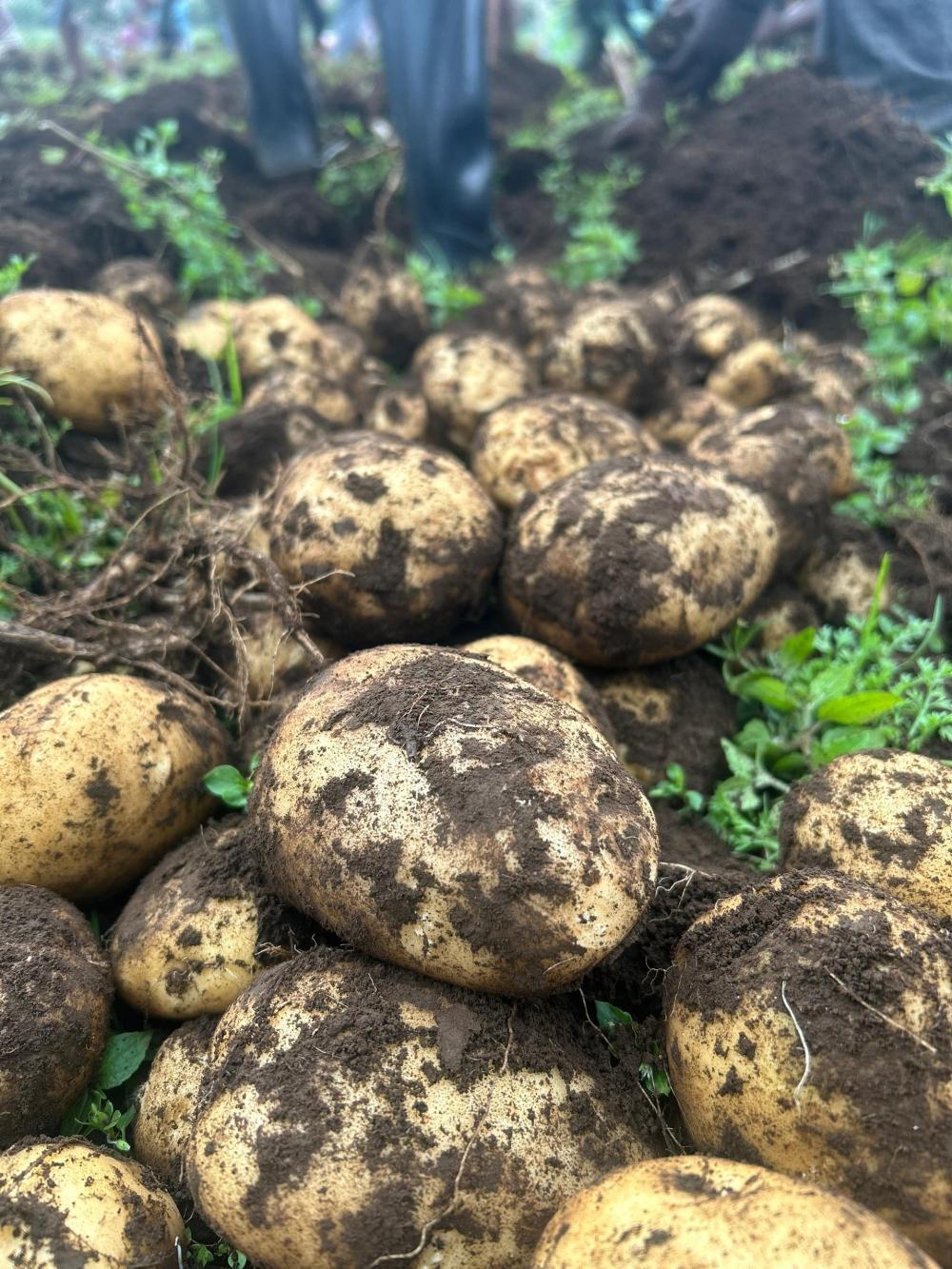Africa-Press – Rwanda. When Wellars Habiyaremye, a 42-year-old farmer from Nyakiriba Sector in Rubavu District, first encountered the Kinigi potato in 1995, he had no idea it would define his livelihood and shape his family’s future.
“I remember clearly when Kinigi potatoes first arrived in our area. They replaced another variety we used to call ‘Sangima.’
Today, I can confidently say that my family, my wife and our four children have been sustained by Kinigi. I even got married in 2009 using the money I earned from selling Kinigi varieties at that time. Over the years, I’ve gradually expanded my farmland to one full hectare thanks to Kinigi,” he said with pride.
The story of Kinigi potatoes, locally known as ‘ibirayi bya Kinigi’, is deeply intertwined with the agricultural evolution of Rwanda’s highland regions. For farmers like Habiyaremye, the variety has been more than a crop, it has been a source of dignity, economic empowerment, and resilience.
He recalls how Kinigi potatoes became widespread in Nyakiriba, Cyanzarwe, Bugeshi, and Busasamana, extending into much of Nyabihu District. He added that it did not only flourish locally, but also found strong markets internationally.
“By 2003, I wasn’t just farming, I had become a trader. Kinigi didn’t require artificial fertilisers; we used compost instead. It also didn’t need pesticides. Burundian traders especially loved them,” he recounted.
In his view, the open availability of Kinigi seed potatoes at the time contributed significantly to local economic development.
“Even individuals who weren’t growing for commercial purposes could get seeds and start cultivating. Investors from Musanze bought from us, and we supplied Nyabihu’s potato processing factory. But today, this variety is slowly disappearing from our area. Many in my village are turning to a new type known as Kirundo,” he added.
Alphonse Munyakayanza, a potato trader with over five years of experience, echoed the sentiments about Kinigi’s popularity.
“One major reason people love Kinigi is its storability. Unlike other varieties that rot within three or four days, Kinigi can last up to a month, sometimes even two,” he explained.
He noted that Kinigi grows well in high-altitude zones including Nyabihu, Rubavu, Cyanzarwe, Bugeshi, Busasamana, and Mudende and its ability to withstand spoilage made it a favorite for both domestic consumers and long-distance traders.
The scientists behind Kinigi variety
According to Jean Claude Nshimiyimana, a scientist at the International Potato Center (CIP), Kinigi was developed in Rwanda in the early 1980s and continues to impress even those who helped create it.
“I’m still in touch with some of the scientists who contributed to Kinigi’s development. They are amazed that, even in 2025, it remains beloved. One of them, now retired and living in Canada, worked in Rwanda in the late 1970s and is still proud of the impact Kinigi has made,” Nshimiyimana told The New Times.
Asked about what makes Kinigi so special, Nshimiyimana cited its distinct flavor and high storability.
“In Africa, we generally prefer dry, starchy foods. Kinigi is exactly that type when cooked, and with high yield compared to other varieties. It’s excellent for making crisps and is widely used in hotels and across the value chain. Even in the field, it resists most diseases,” he said.
Could a new variety match Kinigi’s legacy?
Nshimiyimana believes it’s possible, “Among the 11 new varieties developed recently in Rwanda, some come close to Kinigi. However, any new variety must surpass the previous one in response to today’s challenges like climate change resistance, nutritional content, and disease tolerance,” he explained.
Today, Kinigi’s availability and pricing vary across regions. In Rubavu, it’s currently sold at Rwf 600 per kilogram, while in Kigali prices range from Rwf 800 to Rwf 900.
Athanase Nduwumuremyi, a researcher and coordinator of the Roots and Tubers Programme at Rwanda Agriculture and Animal Resource Development Board (RAB), confirmed that Kinigi, despite declining strength, was still remarkable for its long shelf life.
“It takes about four months to mature, and it can be stored for a long time without rotting. This is mostly due to its genetics. But having been around for over 30 years, the variety is gradually losing its vigor,” he warned.
According to the 2020 Potato Atlas Archives by CIP, potatoes were first introduced to Rwanda around 1900 by German soldiers and Belgian missionaries. They were initially cultivated in mission gardens in places like Gitarama and Butare.
By 1962, Rwanda’s Institute for Agricultural Sciences (ISAR), operating under the Ministry of Agriculture, took charge of agricultural research and, in 1979, collaborated with CIP to launch the National Program for Potato Improvement (PNAP).
Potatoes in Rwanda are predominantly grown above 1,800 meters in altitude especially in Musanze and Rubavu districts where volcanic soil, abundant rainfall, and minor temperatures provide ideal growing conditions. In 1988, Rwanda exported an estimated 2,000 tons of potatoes annually, primarily to Burundi and the then Zaire (now DR Congo).
In recent years, Rwanda has seen a resurgence in its potato sector, driven by joint initiatives between RAB and CIP. Districts such as Burera, Musanze, Nyabihu, and Rubavu have consistently recorded the highest yields nationwide.
Smallholder farmers now average 8.7 tonnes per hectare, with large-scale producers reaching up to 11.4 tonnes.
As Rwanda continues to modernize its agriculture and develop improved seed varieties, the question remains: will Kinigi maintain its legendary status or quietly fade into memory?
What is clear is that this Kinigi variety has become a cornerstone of rural livelihoods. Whether in the memories of farmers like Habiyaremye or the laboratories of scientists like Nshimiyimana, the legacy of Kinigi continues to inspire a new generation of agricultural resilience.
Farmers select quality potato seeds at the beginning of the planting season. Courtesy photos
The demand for potatoes has been increasing every year.
One of the new potato varieties that was recently released in Rwanda.
New potato varieties that will help bridge the gap between supply and demand in the country.
For More News And Analysis About Rwanda Follow Africa-Press

